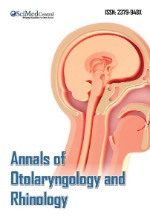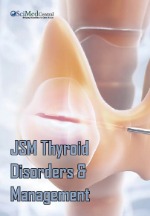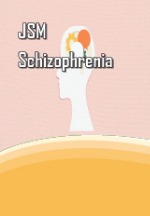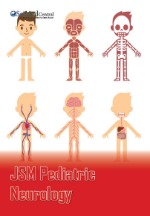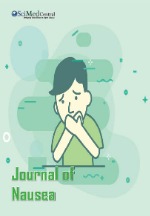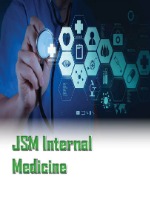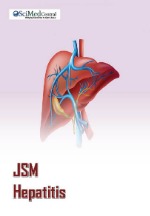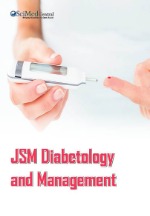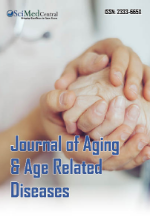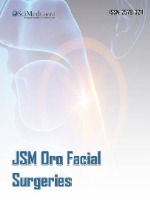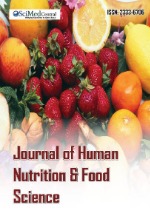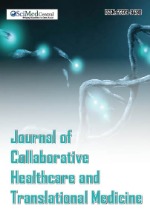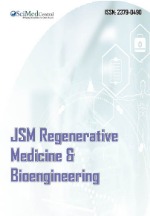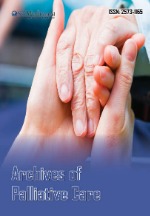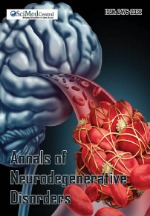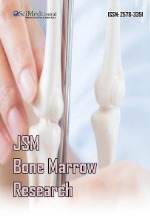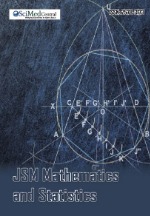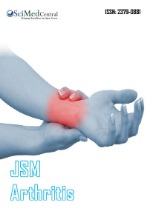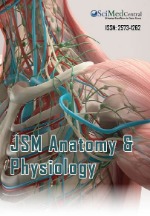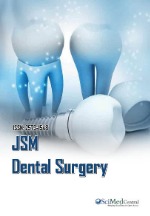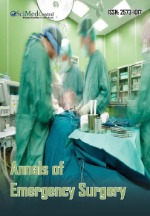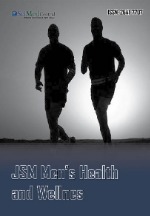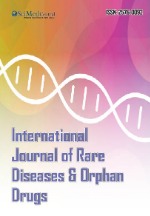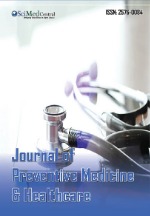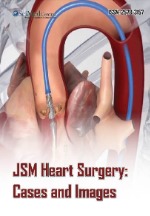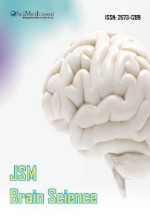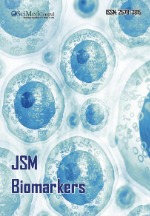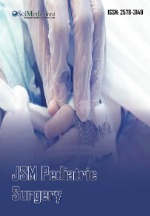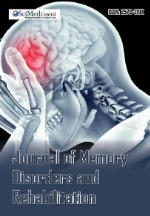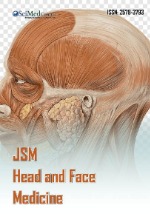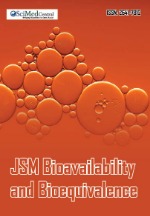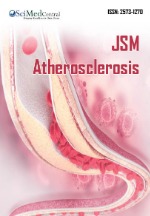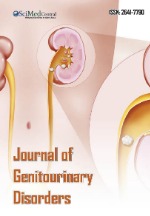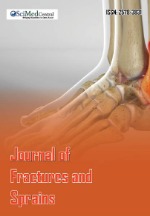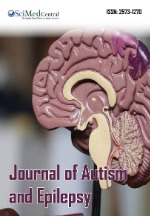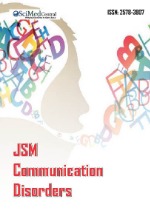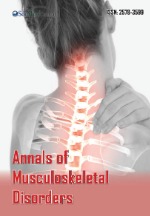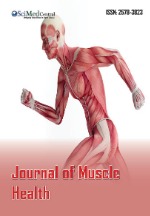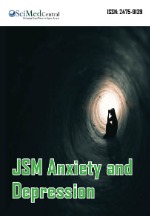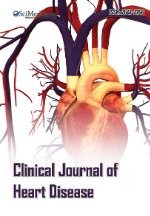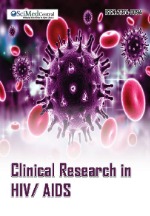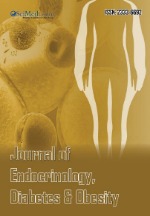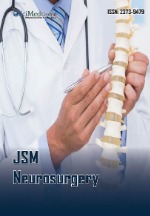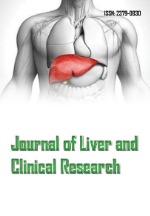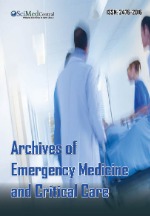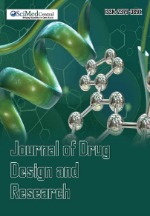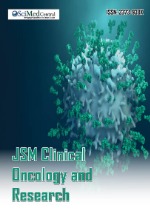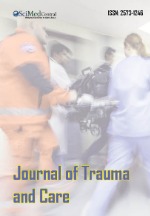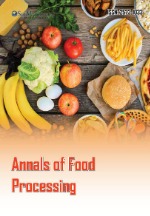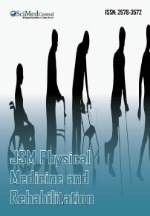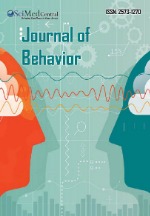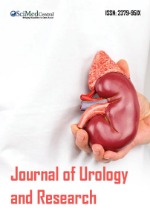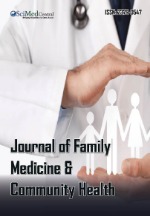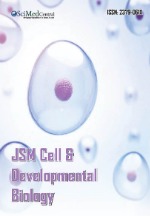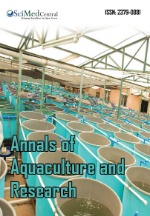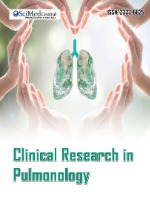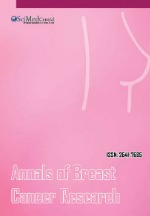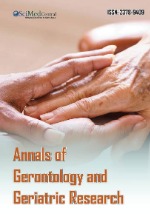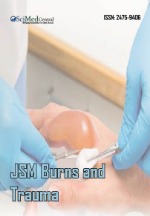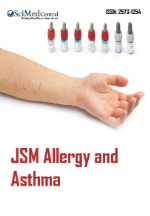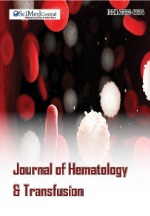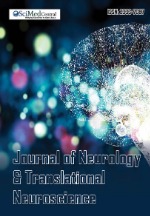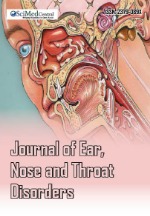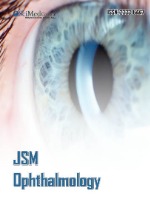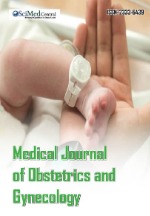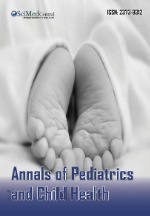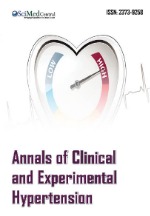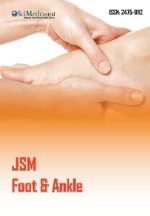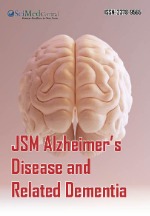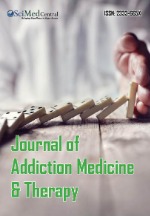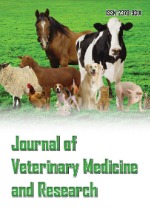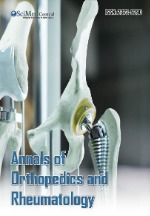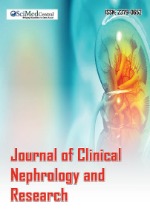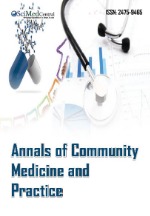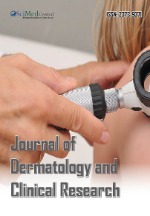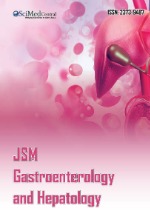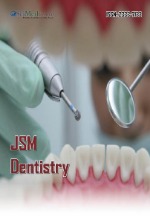A Qualitative Study of the Burden Placed on Caregivers of Children Diagnosed with Cerebral Palsy during the COVID-19 Era
- 1. SRM College of Physiotherapy, SRM Institute of Science and Technology, India
ABSTRACT
Objectives: Caregivers of children with cerebral palsy suffer from a substantial burden. However, there is a need for more documentation of the various sources of burden during COVID -19 in low- and middle-income settings. Hence, we aimed to report the caregiver Burden during the COVID-19 era in children with Cerebral Palsy.
Methods: A total of 10 respondents, ages ranged from 30-40 years, mothers of children with CP participated in qualitative and one-to-one interactive direct interview methods using e-communication access like WhatsApp and zoom call meetings and even over the mobile communication through semi-structured interviews with questions based on individual, interpersonal, family and social. The interview has conducted all sessions were recorded and stored for further qualitative analysis.
Results: Overall, interviews were conducted with ten respondents with detailed explanations for each question. All the mothers expressed their difficulties and coping strategies for being parents of cerebral palsy. The classification focused their research and analysis on the socio-ecological framework. All the mothers discussed the challenges they faced and the coping mechanisms they used to raise children with cerebral palsy.
We examined the model for several variables that heightened the tensions during the COVID-19 lockdown.
In a socio-ecological framework, we have shown the outcomes. The socio-ecological framework served as the foundation for coding and analysis. We analyzed the model of various factors that increased the stresses during the COVID-19 lockdown. We have depicted the results in a socio-ecological framework.
Conclusion: Caregivers have increased stress levels during the lockdown period than on regular days. This may be due to managing all household activities and family needs, providing child care, and protecting children from society.
KEYWORDS
- Qualitative study
- cerebral palsy
- COVID-19 lockdown
- caregiver burden
CITATION
Vadivelan K (2023) A Qualitative Study of the Burden Placed on Caregivers of Children Diagnosed with Cerebral Palsy during the COVID-19 Era. J Neurol Disord Stroke 10(1): 1197.
INTRODUCTION
Coronavirus is the causative agent for infectious diseases affecting the whole world, the mortality rate is increasing daily, and people are afraid of pandemic disease [1]. In about 2.4% of china, 1% (0.6%) of children had a severe illness. According to US centers for Disease Control and Prevention data, infants are affected and hospitalized, but death remains extremely rare [2,3].
Most people have mild to moderate respiratory illnesses and underlying problems like a cardiovascular and chronic respiratory disease. Though there is an option for self-protection against this virus, children with CP are unaware of it. For these populations, the parents need to be more responsible for protecting them.
Cerebral Palsy children depend mainly on caregivers and parents as their functional ability differs from other children. Apart from the responsibility, this lockdown period adds more pressure on the caregivers and increases stress. Substantially stress on parents has also increased in this lockdown period, irrespectively with family, social stigma, finances, and health. Caregiving impairs the quality of life, often leads to depression, and is inversely proportional to a lack of self-care and social support [4].
The burden on the caregiver is even higher in this lockdown period, and there are many chances of excess psychosocial stress. As in the previous study, the caregivers reported handling the child at home is difficult. However, this period exclusively deals with the children at home. The family members also stay at home, and the mothers must fulfill their needs. Work pressure may lead to disturbed relationships between the family, health problems, financial problems, and even child care.
Since there is a significant need for satisfying things at home, balancing everything, irrespective of child care and protection, is very difficult. Moreover, for mothers, having unsupported interactions is a problem within society [5,6]. This emotional situation is often neglected by society, and family members, especially South Indian women, often hide their emotions and deny expressing them. Hence, we aimed to report the caregiver Burden during the COVID-19 era in children with Cerebral Palsy.
MATERIALS AND METHODS
The study protocol was approved on 25.12.2019 by the institutional ethics committee at a reputable tertiary care teaching hospital, with the reference number 1506/IEC/2019. In addition, international ethical guidelines for health-related research involving humans (2016), National guidelines for biomedical and health research involving human participants, and the Declaration of Helsinki (Revised 2013) all provided oversight and approval of the project (2017).
The study was conducted as a qualitative and one-to-one interactive direct interview method using e-communication access like what app, zoom call meetings, and even mobile communication. We have a semi-structured interview with questions based on individual, interpersonal, family, and social.
Interviewers
The selected mothers/ caregivers are asked for their available timings for the interview sessions about 1 hour. Both authors approached the questionnaire session with informed consent from the caregiver. All the sessions were recorded and stored for further reference.
Theoretical framework
The primary theoretical approach of this explanation was based on Bronfenbrenner’s SEM of health influenced by multiple factors [6]. Individual–level influences, interpersonal relationships, social factors, organizational environment, and determinants play a role during this lockdown period. Behavioral change and perceived quality of life among caregivers were analyzed and elevated along with the caregiver burden influenced by the caregiver’s characteristics, social interactions, social support, organizational structure, and policy environment.
Sampling
Participants were picked from the tertiary care center, which brought their CP children for regular rehabilitation services. All the participants clearly explained the purpose of the study. We interviewed them during this lockdown period to understand their current handling situation and balance their work and emotional status. Most of the respondents were from middle to lower socioeconomic class and lived in the tertiary care center’s surrounding rural and semi-urban areas.
Setting of interviews
We conducted interviews via e-communication during this lockdown period, as it is one of the best ways to keep and be safe. Therefore, the availability of the respondents was collected, and based on that; the two interviewers conducted the questionnaire session.
Interviews
A total of 10 interviews were conducted. All the participants were women aged 30-40 years, mothers of children with CP. The children ages from 2-10 years. Under each factor, ten questions were formulated and asked the caregivers. All the answers from each respondent complied for most repeated answers.
Transcription and analysis
We obtained the data from respondents after repeated analysis of the interviews. First, the transcription was done in the English language during the interview to ease out the answers from the caregivers. Then, thematic content analysis was performed. The interview transcripts were kept in an open coding tree. The coding tree was depicted and verified with codes based on all transcripts. An Excel spreadsheet from Microsoft was used to code. . After the first coding round, we grouped the codes based on the socioeconomic theoretical framework. Two authors discussed all the coding trees and verified them with discussions. The key elements are depicted in the COREQ flowchart in Figure1. The authors strictly maintained privacy and confidentiality.
Figure 1 Key elements of the study in the COREQ flowchart.
RESULTS
The overall interview was conducted with ten respondents with detailed explanations for each question, where all the mothers expressed their difficulties and coping strategies as parents of cerebral palsy. The socio-ecological framework served as the foundation for coding and analysis. We analyzed the model of various levels of factors that increased the stresses during the lockdown period (COVID-19). We have depicted the results in the socio-ecological framework in Table 1.
INDIVIDUAL Stressors
Individual stressors are comparatively higher than other stresses as every family pressure falls on the mother. Mothers are significant caregivers to disabled children. These individuals need the knowledge and skill to balance child care and family needs. We found significant stress, such as a lack of self-care, awareness, and managing household activities, also arises. Caregivers tend to increase their burden level during the lockdown period, as there is no way of coming out of the family and relaxing. The lockdown period has put these mothers in a position of inadequate rest and recuperation. Lack of rest led to health issues such as physical pain and insomnia and hampered their ability to provide good quality child care.
“Balancing child care and family needs are complicated and challenging. I cannot go out of the home for therapy, so complete therapy care should also be provided by me only. Lockdown periods have increased household responsibilities and decreased personal space- lack of rest, self-care”- parent of a cerebral palsy child.
PHYSICAL Stressors
The physical duties of the mothers relatively increased in this lockdown period, completing all the household activities and doing some therapy for my child. Physical pain is the most remote part of life, which the other members cannot understand until we express it. Therefore, sharing household activities will be beneficial for mothers to reduce their pain. This pain affects the mother’s health and reflects on the childcare and family.
“Major thing is handling both children at a time and finishing all household work – is a major task”- parent of cerebral palsy
“No time for rest, satisfying all family needs is the priority now than self-care”- cerebral palsy child’s mother.
EMOTIONAL Stressors
All mothers had different emotional responses, such as grievances, guilt, and anger, and continued thinking about the future. Some mothers reported that handling a unique child is very difficult, and undergoing all blame from family and community pulls them down emotionally.
“Sometimes I feel like killing my child as it increases stress in my whole life and could not spend my own life.”- Mother of the cerebral palsy child.
“Telling Abusing words by the spouse towards me in front of the child and family members” –embrace me a lot.
Mothers worry a lot about their child’s future, and the most significant concern on developmental disability increases daily. The child’s health will be degrading and become dependent on everyone.
“I am perturbed about my child’s future after me. I do not think others will care for a child like me”- by cerebral palsy mother.
INTERPERSONAL Stressors
Interpersonal relationships have been worst comparatively as arguments between each other and distance between us have changed into a change in opinions. Often caregiving depends on the mother while the father tends to support financially, but this lockdown period made everyone stay home. So it is the parent’s responsibility to give child care, due to lack of interest, external stresses, and extended family issues tend to provide a lack of dedication towards child care.
“Inappropriate child care leads to clashing between the spouse and me”- parent of a cerebral palsy child.
“His stress also heads me, which will also be my extra pressure”- mother of the cerebral palsy child.
“Sometimes I feel like going out of home, leaving everything as we are starting arguing for small things in these days”- mother of a cerebral palsy child.
COMMUNITY Stressors
The community has been one of the options connecting family and society. Unfortunately, as the entire community is shattered, there is no option to get out for work. The government provided some support and needs in the initial phase of the lockdown period.
Household activities and family members’ needs have also increased, and satisfying them is a big task for mothers. Most problems have been reported from the urban areas due to a lack of neighboring support. The lack of therapy sessions and social interaction with other children has decreased, indirectly affecting their quality of life.
“I need to sit for a long time with my laptop to finish office work, and plan for my child and also should take care of my other child also”- mother of the cerebral palsy child.
“Government support is insufficient for the whole family”- mother of CP child.
FINANCIAL Stressors
Many mothers have reported that they do not have any savings and depend on daily wages. Financial income was zero for people in rural areas comparatively. Managing everything based on income was a challenging task. The initial period was quite manageable, but as the days increased for lockdown, my financial status became poor, and my seeking help increased.
Usually, the husband takes care of the whole financial expenditure of the family, but now all are at home and have no income to spend.
“Many people do not understand the quality of life in managing the house with two children, while one is disabled and finally everyone in the home waiting for the food.”
“Lending money is increasing daily as no job opportunities”- mother of the cerebral palsy child.
ENVIRONMENTAL Stressors
The home environment is quite different from the regular days. People are everywhere, and doing their work and not spending appropriate time with the child irritates the child.
“It is like a house arrest where we cannot take the child anywhere out, so the child has repeatedly seen the same faces.” - Mother of a cerebral palsy child.
Inadequate space in the house for therapy sessions, the color of the house, and people spending time also make the child’s mood; if any of these factors is improper, it leads to irritation and depression, which again increases the stress of the parents.
HEALTH SYSTEM and POLICY stressors
Though many people are not aware of the disability card policy from the government, the government or the health care providers should initiate awareness about the benefits of these health system policies.
Some mothers have reported that this disability card amount of rs.1500 per child was helpful during this lockdown period, but there was a delay in receiving the amount.
“Government can consider the medical expenses for the child, and provide concessions along with the disability card.”- Mother of the cerebral palsy child.
“Travelling to local doctors is also very difficult in this period, while they can send doctors home for a monthly check-up”- mother of a cerebral palsy child.
“The cost for child necessary items has also increased a lot, so that should also be considered, and they can increase the amount for child welfare,”- said the child’s mother.
DISCUSSION
The knowledge about the coping strategies of mothers with cerebral palsy children during COVID-19 is depicted in this study. It shows all the dimensions of the mothers’ stressors in Tamil Nadu of South India. We identified some factors and used socioeconomic framework including individual, interpersonal, family, community, and environmental and health policy [7]. Many caregivers shared their emotional views, and their coping strategies were explained well. This explanation has also made us view the known and unknown facts about the problems they faced by them during this lockdown period.
We segregated the data obtained from the mothers. We tried to sort it out based on five factors- physical, emotional, social, financial, and informational and all different stressors put under individual, interpersonal, community, environmental, and health system and policy. In Table 1, all the factors and stressors are depicted.
|
Table 1: Various dimensions of stresses among caregivers. |
|||||
|
Dimensions of the socio-ecological framework |
|||||
|
|
Individual |
Interpersonal |
Community |
Environmental |
Health system and policy |
|
Physical |
Very extensive and difficult to manage
Balancing between the household work as well as child care increases physical pain.
Continues restless period of work. |
Lack of physical care from husband, Miscarrying of child care.
Physical abuse
Inability to take good care, though time is present. |
No physical support from the community.
Physical work in family have increased.
Satisfying all the needs through physical work makes angry. |
Making the child to do exercises with available sources is challenging.
Worried about child future care. |
No health policy |
|
Emotional |
Unable to share emotions with others
Different emotions play role in a day such as angry, depression, anxiety etc. |
Misunderstandings, Use of abusive words.
Fights on small things. Emotional abuse from spouse. |
Lack of social support,
Hard to believe neighbours People don’t understand the difficulties by parents |
No disable friendly access at home. |
Grievances on child care. |
|
Social |
All work pressure over caregiver
Not involving child in family |
Blaming each other for child disability
Distance between husband and wife has increased |
Family members show hatedness towards child and not involving parents in all activities Showing more sympathy to child |
No inclusive spaces for proper care. |
Lack of social supporting groups. |
|
|
Blaming child for disability |
Arguing between each other |
Discrimination within the family members |
|
|
|
|
No financial support. |
No financial income from husband or family members |
|
|
|
|
Financial |
No job vacancies
Lending money from known people have increased. |
Savings are not enough to give good care Balancing all house needs and child care is difficult. |
Medical expense cost have increased.
Unable to buy required goods for the family |
Got some help from government initially.
No enough social support regarding financial expenses. |
Disability welfare is insufficient.
No hospital/ therapy care |
|
Informational |
Insufficient knowledge about child care at home. |
Improper understanding of child care |
|
Lack of Identification of special child at home and providing health support. |
Delay in receiving the disable card money. |
Individual-level factors are based on physical stress, discomfort, and pain they undergo in homes, families, and society [8,9]. These are the hidden factors about the physical problems that can lead to poor health and affect the quality of life. The parents are the significant contributors to child care, but this lockdown has involved the whole family together, irrespective of child care and health. Balancing all the family needs and childcare put the women in the house into a work machine, where they tend to work continuously without any rest.
Another crucial individual stressor was the lack of knowledge about home care for children with cerebral palsy, which is entirely different from hospital-based therapy sessions. The necessary accessories for therapy are unavailable at home, so the mother has to take care of all therapy sessions, which has increased responsibility without help and hopeless family members. The essential factor to working in the house is compensating everyone and self-care.
The support from the spouse and family members have been explained under this factor when it comes to interpersonal factor. Caregiving is mutual understanding between each family member for the child. However, the issue comes from mishandling and miscarrying the child. Due to all staying at home, the consequences arise felt by the mothers from the others in the home. Usually, all the spouses go to their work and complete some of the household work and start the therapy sessions; while the therapy sessions are complete, they move home, and the daily routine goes on. Therefore, the lockdown period is entirely different.
The arguing between the couple has been reported to be higher among mothers, and misunderstandings and distance between couples have increased daily during the lockdown. The lack of a spouse to handle the child is the central issue from the mother’s side. Alcoholism is another issue in the family and is considered domestic violence.
Community stressors are not highlighted much in society, the view of the parents from the community side is entirely different in the expected period, and this lockdown period has an extensive lack of community support. Because of this, community involvement is comparatively less, interaction with the neighboring people is also very tough, and taking out the child outside the home is also restricted. Most families have shattered financial support as many did not go for jobs, insufficient savings, and family needs for food have increased.
The factors leading to increased stress levels have been highlighted, and the domains have been implemented and explained in detail based on the interviewed data. The findings in this study are distinctive and significant because of several environmental elements. The significant primary caregivers are from the rural areas and middle-class economy. Women, in general, were not considered much as the bread maker of the family. And not given as much importance as men in the family, the women manage all the family household work entirely. If the woman is working, she must manage the official and homework.
The study’s findings significantly affect the coping strategies with various dimensions. This study implies the overburdening of women in the family and society. Some of the highly vulnerable issues have also been highlighted [10]. Especially the limitations and efforts for making child care were considered. The focus of the study was to know about the consequences faced by the mother during this lockdown period. This study views the public perspective based on the parents of cerebral palsy children.
CONCLUSIONS
This study concludes that caregivers have increased stress levels during the lockdown period than average days; this may be due to managing all household activities and family needs and providing child care, protecting children from society. This implies that a lack of family and community support affects the caregiver’s overall health and can lead to depression. A vicious cycle is present between the caregiver, spouse, family, community, and environment. If one component is affected, especially the caregiver, then gradually, every aspect is affected. The change in the situation can only be prevented by creating good awareness and knowledge of poverty, stigmatization, and poor policy. Despite these limitations, managing the COVID-19 period, the consequences, and financial expenditure are well explained. This study will be overviewing for the public to support caregivers in all dimensions to improve their quality of life.
REFERENCES
- Report of the WHO-China Joint Mission on Coronavirus Disease 2019 (COVID-19) [Internet]. WHO. 2020 [cited 2022 May 13].
- Vadivelan K, Sekar P, Sruthi SS, and Gopichandran V. Burden of caregivers of children with cerebral palsy: an intersectional analysis of gender, poverty, stigma, and public policy. BMC Public Health. 2020; 20: 645.
- Marron EM, Redolar-Ripol D, Angles MB, Nieto R, Guillamon N, and Hernandez E, et al. Predictors and related factors that influence the burden on caregivers of children with cerebral palsy.Univ. of Psychol. 2013;12: 767–777.
- Pousada M, Guillamon N, Hernandez-Encuentra E, Munoz E, Redolar- Ripoll D, and Boixados Angles M, et al. Impact of Caring for a Child with Cerebral Palsy on the Quality of Life of Parents: A Systematic Review of the Literature. J Dev Phys Disabil. 2013; 25: 545–77.
- Thrush A, Hyder AA. The neglected burden of caregiving in low- and middle-income countries. Disabil Health J. 2014; 7: 262–272.
- Bronfenbrenner U. The Ecology of Human Development: Experiments by Nature and Design. Harvard University Press. 1981.
- Baker K, and Donelly M. The Social Experiences of Children with Disability and the Influence of Environment: A framework for intervention. Disabil & Soc. 2001; 16: 71–85.
- King S, Teplicky R, King G, and Rosenbaum P. Family-centered service for children with cerebral palsy and their families: a review of the literature. Semin Pediatr Neurol. 2004; 11: 78–86.
- Alaee N, Shahboulaghi FM, Khankeh H, and Mohammad Khan Kermanshahi S. Psychosocial Challenges for Parents of Children with Cerebral Palsy: A Qualitative Study. J Child Fam Stud. 2015; 24: 2147– 2154.
- Chappell NL, Dujela C, and Smith A. Caregiver Well-Being: Intersections of Relationship and Gender. Res Aging. 2015; 37: 623–645.



